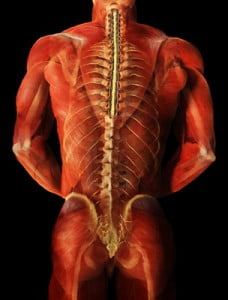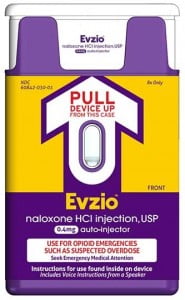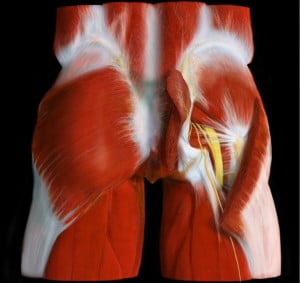 I met a lovely 53 year old gentleman, who was suffering from severe low back and hip pain for over a year, diagnosed with a herniated disc. He had tried physical therapy with some relief, but still was unable to eliminate his pain. After diagnosing and treating muscles in his low back, buttock, and thigh, he reported no low back pain, and was discharged from our office. However, after five years, he returned to our office, stating that he had foot pain, diagnosed with plantar fasciitis, and unable to rock climb or hike without severe pain in his calves and feet. After identifying and treating multiple muscles in his calves, shins, and feet, he reported 100% relief, and even finished a 10 day rock climbing trip. Although you may be given one diagnosis, sometimes we find muscle involvement and are able to eliminate the pain!
I met a lovely 53 year old gentleman, who was suffering from severe low back and hip pain for over a year, diagnosed with a herniated disc. He had tried physical therapy with some relief, but still was unable to eliminate his pain. After diagnosing and treating muscles in his low back, buttock, and thigh, he reported no low back pain, and was discharged from our office. However, after five years, he returned to our office, stating that he had foot pain, diagnosed with plantar fasciitis, and unable to rock climb or hike without severe pain in his calves and feet. After identifying and treating multiple muscles in his calves, shins, and feet, he reported 100% relief, and even finished a 10 day rock climbing trip. Although you may be given one diagnosis, sometimes we find muscle involvement and are able to eliminate the pain!
leg pain posts Archives
How important is your diagnosis?
A common link between pain and allergies
Do you have widespread pain? Do you also have allergy symptoms like itching, hives, or wheezing? Did you know that allergy symptoms and bodily pain are both symptoms of a common condition?
If any of these questions resonate with you, you could have Mast Cell Activation Syndrome (MCAS), a condition that causes both pain and allergy symptoms. MCAS is a common condition that may impact up to 17% of the population.
If you have never heard of MCAS, that’s because MCAS is a condition that is only gaining widespread recognition in the past decade or so through a recent boom in research. There are many doctors who are not familiar with MCAS, but as research grows on the condition, doctors are becoming aware of how and when to diagnose it.
If you have allergies and pain symptoms, you may have never thought about how these two seemingly unrelated symptoms might be a sign of a single condition. If you have MCAS, or think you might, we encourage you to learn more about a clinical trial opportunity we are holding at our clinic.
Best Posture for Reading: How to alleviate back pain
There’s nothing better than snuggling into a good book. But are you experiencing back pain while sitting and reading for an extended period? Back pain can often be caused by improper posture. While reading, whether using a physical book or an electronic device, many people experience back pain in the neck and shoulder or in the low back. Here are some ways to alleviate back pain while reading.
Reading can cause strain on the neck and shoulders if there is a tilt in the neck to look down at your book or device. While sitting and reading, it’s important to place your reading material at eye level. Sitting with your head leaning forward and back hunched can cause hyperflexion of the cervical spine and lead to severe neck and back pain over time. It is best to use a stand that can be adjusted to the required height. Many have recommended raising your materials with your hand; however, this may also cause some strain on the neck and shoulders. While holding an object in front of you at eye level, either with one or both hands, your shoulder and neck muscles are in constant contraction to sustain this positioning. Even over a period of a few minutes, this can cause the muscles to spasm or cause intense strain. Using an adjustable stand will ensure that we can sit straight up, taking pressure off of the cervical spine.
The best posture for reading is sitting upright in a chair with lumbar support. Avoid sitting on a seat that lacks back support such as a stool or a bench. A chair with good ergonomics is one that supports the low back and provides an arm rest to place both elbows. Mentioned above, we want to avoid stiffness in the upper back and neck muscles. Placing your elbows on an arm rest that is low enough to support your arms without adding additional strain is ideal. A study examining the association of low back pain with cell phone use found that thoracolumbar kyphosis and lumbar lordosis (curvature in the spine causing a pelvis tilt) increased with prolonged sitting. Participants had a slouch and progressed spine curvature after sitting for longer than 30 mins. The study also found that those with pre-existing back pain had a significantly higher increase in lordosis and complained of more back pain. When sitting for longer than 30 minutes, take breaks. Sitting should be interrupted by standing breaks to keep blood flowing and reduce stiffness in muscles.
To summarize, here are some things we can do to minimize back pain while reading or using a device while sitting.
– Sit with back and arm support for your neck and shoulders
– Bring your reading material or device to eye level to avoid neck strain
– Take breaks and stand for a minute or so while sitting for more than 30 minutes
References
In TS, Jung JH, Jung KS, Cho HY. Spinal and Pelvic Alignment of Sitting Posture Associated with Smartphone Use in Adolescents with Low Back Pain. Int J Environ Res Public Health. 2021 Aug 7;18(16):8369. doi: 10.3390/ijerph18168369. PMID: 34444119; PMCID: PMC8391723.
Acetaminophen
The BMJ (what used to be called the British Medical Journal) just published an article stating that acetaminophen (ie Tylenol) has been found to provide no relief in low back pain (compared to a placebo). Acetaminophen was also related to a risk of having an abnormal liver test. The article included data from 13 randomized controlled trials (RCTs).
An RCT to evaluate a drug is a research study where one group of people receives the actual drug (in this case, acetaminophen) and the other group receives a placebo (a pill with no active ingredient, generally a sugar pill). Then, data is collected from both groups to see if either achieved any pain relief. In this analysis, it shows that whether you receive acetaminophen or a sugar pill, you had the same amount of pain relief – meaning that active drug had no real pain relief effect.
relief. In this analysis, it shows that whether you receive acetaminophen or a sugar pill, you had the same amount of pain relief – meaning that active drug had no real pain relief effect.
Although most of the patients I see find no relief from acetaminophen, a small percentage of patients do, so don’t completely dismiss this drug when it comes to helping your pain. However, if you do take acetaminophen, make sure that you’re not taking too much. The FDA recommends taking less than 3000mg a day. This means if you’re taking Extra Strength Tylenol (500mg), you can only take 6 pills a day, or regular strength, 300mg, 10 pills a day. Higher amounts can lead to liver damage that could even be life-threatening.
When Making Medical Decisions About Pain Relief, Is More Information Better?
In today’s world we are bombarded by information and ways to obtain it. Do you want to know how many steps you take a day? Just buy a device and it will calculate it for you. Care to know what your cholesterol levels are? Simply go get a kit at your nearest drug store. Is it possible we are gathering too much information for our own good?
The same question can be asked about medical testing. Is it useful or even helpful to know certain things about our bodies? Many of us have undoubtedly had the experience where we have gone to the doctor because we had pain and an imaging study was ordered. MRI, CT, and ultrasound can give us information about our bodies that would have been unimaginable in the past.
While technology in general is of course a huge benefit, at the Norman Marcus Pain Institute, we believe it is necessary to proceed with caution as we navigate through it all. At NMPI, one common problem we find in back pain, neck pain, and shoulder pain is the overuse and overreliance on imaging studies. “Abnormalities” are often found on imaging studies without any relation to one’s pain. In fact, seeing abnormalities is more common than seeing a “normal” spine! For example, up to 40% of people without back pain can have herniated discs and as many as 70% may have degenerated discs. That is why the US Institute of Medicine suggests not getting an MRI too quickly since you are likely to see one of these problems and assume it is the cause of your pain. This can lead to unnecessary nerve blocks and surgery.
herniated discs and as many as 70% may have degenerated discs. That is why the US Institute of Medicine suggests not getting an MRI too quickly since you are likely to see one of these problems and assume it is the cause of your pain. This can lead to unnecessary nerve blocks and surgery.
At NMPI, we often see patients who have a herniated disc, yet they only have pain in their back and buttock. They have not experienced any radiation into the leg(s) at all. In these patients, the pain generally has nothing to do with the disc herniation since disc herniation pain generally radiates down the leg and into the foot. Even when the patient is experiencing pain down the leg with a herniated disc found on MRI, muscles in the low back and buttocks may be the cause of the pain. If muscles are not examined as a potential cause, you may undergo an apparently reasonable surgery, without achieving relief of pain. Some studies show that up to 50% of spine surgeries fail (resulting in failed back surgery syndrome) and one of the reasons is the failure to identify muscles that were the true source of the pain.
Most back pain and neck pain is caused by soft tissue such as muscles and tendons. This is confusing because you may have been told your pain is from your spine, discs, or nerves. The problem is most people as they get older have signs of wear and tear on their x-rays and MRIs, but these common signs of aging may not explain your pain if the pain actually originates in your muscles. That’s why we say, when diagnosing persistent pain it’s not having “more” information at hand, it’s having the “right” information at hand.
At NMPI, we often see patients who experience persistent pain even after multiple spine surgeries. Our non-surgical, non-invasive treatment program has most of our patients leaving our office free of long standing back, neck, shoulder, and headache pain.
What To Do When Back Pain Causes Overdose?
“We don’t appreciate what we have until it’s gone.” If only we had a dime for every time we heard this. Perhaps the reason it is such a common expression is the simple truth in it. This certainly applies to our health, but specifically our backs. We probably all take our good health in vain, until something goes wrong. By the time we are in our forties over twenty percent of us experience some form of back pain. And what do we do when we experience pain? Well, unfortunately many people will turn to strong painkillers. This means opioids, morphine-like painkillers. And, while we have written about this topic in the past, there is something new on the horizon. Evzio, the brand name of injectable Naloxone, is a prescription medicine that can block the effects of morphine and related painkillers. Approved by the FDA in April 2014, it allows a patient to quickly treat themselves or be treated by a family member if the patient has overdosed on opioids.
In the past, Evzio was difficult to obtain due to its high cost. However, recently The Clinton Foundation announced that it has negotiated a lower price for Evzio (see NYT article). This will allow municipalities to more easily purchase this medication, making it more available to those who need it.
It is a sad reality that many people will turn, in desperation, to painkillers as an answer to their aching backs. We, at the Norman Marcus Pain Institute, only use opioids as a last resort. Our method of finding the source of the pain and treating it has eliminated back pain for thousands of patients.. Nevertheless, with the rise of overdoses each year, the increased availability of naloxone to non-medical personnel will allow lives to be saved.
Is Looking Good Worth Having Back Pain?
There is an old expression, “beauty is pain.” Does it need to be? Is it worth risking your long-term health? Why do women wear high-heeled shoes when they know that looking beautiful in the moment may cause them pain down the road? Scientists from the Universite de Bretagne-Sud recently conducted experiments, which studied the effects of high-heeled women on men. Women who wore higher heels (3-4 inches vs. 2 inch heels) were able to get more men to answer survey questions on the streets and were picked up faster in bars and clubs. These studies show some type of empowerment in women with high-heeled shoes.  Knowing that this empowerment exists, and as fashion has increased the height of heels from 4 inches to 5 inches, we would like to remind you that walking for extended periods in high heels can cause calf tendons to shorten and possibly result in an increase in low back pain.
Knowing that this empowerment exists, and as fashion has increased the height of heels from 4 inches to 5 inches, we would like to remind you that walking for extended periods in high heels can cause calf tendons to shorten and possibly result in an increase in low back pain.
Here at the Norman Marcus Pain Institute, we see patients that run the gamut of factors causing their back pain. Prevention is always the best treatment; since low back pain affects so many of us a simple intervention is being more conscious of our shoes! While those Manolo Blahniks and Jimmy Choos may be stunning, they may be causing a problem for you down the line. At NMPI, we won’t say don’t wear them, just please, wear them in moderation.
Is Bad Weather To Blame For Your Lower Back Pain?
A New York Times article Weather May Not Affect Back Pain, printed mid-July, cited a study showing that weather may not affect back pain. The purpose of the study was to explore the often-heard complaint from patients diagnosed with persistent pain related to muscles and bones (musculoskeletal pain) that weather changes cause an increase in pain. The study was based on an analysis of 993 patients who had seen their physician in 2011-2012 complaining of an episode of sudden back pain. These were not patients with a history of back pain.
So this article does not actually examine patients who already have back pain to see if the pain is increased with bad weather. In my practice, at NMPI, I have patients who can tell me a snowstorm is coming 3 days before it occurs. Although studies of the association between weather and pain are not uniformly supportive of the connection, a study done in 1995 of 558 patients with chronic pain found that 2/3 experienced an increase in pain and most of them prior to the occurrence of the bad weather.
 I have patients whose pain is so severe with bad weather that they can hardly get out of bed. Although there is no good scientific explanation for this association, some suggestions have been offered. When the barometric pressure falls, the air pressure in a painful joint may continue to be a little higher than the air pressure on the outside of the body, causing an increase in pain. Another explanation is that cold and/or inclement weather decreases the amount of time you are outside and active. Patients with musculoskeletal problems (i.e. muscle pain and arthritis) often feel worse with inactivity. In addition cold weather causes the blood vessels in the hands and feet to constrict, which can decrease the amount of available oxygen, resulting in increased muscle pain.
I have patients whose pain is so severe with bad weather that they can hardly get out of bed. Although there is no good scientific explanation for this association, some suggestions have been offered. When the barometric pressure falls, the air pressure in a painful joint may continue to be a little higher than the air pressure on the outside of the body, causing an increase in pain. Another explanation is that cold and/or inclement weather decreases the amount of time you are outside and active. Patients with musculoskeletal problems (i.e. muscle pain and arthritis) often feel worse with inactivity. In addition cold weather causes the blood vessels in the hands and feet to constrict, which can decrease the amount of available oxygen, resulting in increased muscle pain.
If your history indicates that bad weather causes an increase in your pain, it is likely that your flare up is most likely not an indicator of physical deterioration. Additional pain can be reasonably treated with increased medication for the brief period of weather related pain.
Concerns about the Growing Misuse of Opioids – Prescription Painkillers
From 1991 to 2009, the number of prescriptions written for the strongest pain medications tripled. These medications are collectively named opioids and include morphine, oxycodone, and hydrocodone.Opioids are a type of pain drug that may cause serious side effects. From 2005 to 2009, the number of emergency room visits for nonmedical use of prescribed pain medication doubled. Therefore, the states and federal governments are acting to try to limit the amount of pain medication being prescribed.
At NMPI, we focus on finding the most effective treatment to relieve our patients’ pain – without surgery, steroid injections, or heavy painkillers. However, when a patient complains of severe pain and is not responding well to other pain medications, stronger, prescription opioids will be given.
 Some opioids, such as oxycodone, are often combined with Tylenol (acetaminophen) in one pill. Some examples of these combination drugs are Lorcet, Lortab, Norco, Vicodin (are all hydrocodone and acetaminophen), and Percocet (oxycodone and acetaminophen). Most often, severe pain is related to a condition that will improve over time. Ideally, all prescription pain medications should be given only while severe pain persists. Like any medication, there are risks and side effects:
Some opioids, such as oxycodone, are often combined with Tylenol (acetaminophen) in one pill. Some examples of these combination drugs are Lorcet, Lortab, Norco, Vicodin (are all hydrocodone and acetaminophen), and Percocet (oxycodone and acetaminophen). Most often, severe pain is related to a condition that will improve over time. Ideally, all prescription pain medications should be given only while severe pain persists. Like any medication, there are risks and side effects:
• Opioids can make you drowsy – which raises the risk of falling and severe injury
• Opioids when mixed with alcohol, anti-anxiety medication, seizure medication, muscle relaxants, or sleep-aids can be deadly.
• Opioids cause constipation and can lower sex drive.
• Patients can become physically and psychologically dependent on opioids.
• Overtime a patient with chronic pain can develop a tolerance for the opioid and need a higher dosage.
Keep in mind that not all pain requires such strong medication, and most patients with pain can be managed with drugs such as acetaminophen (Tylenol) and aspirin-like drugs, called non-steroidal anti-inflammatory drugs (such as ibuprofen and Naproxen). When taken as directed, these less powerful drugs may be all that you need. (There are potential serious side effects with acetaminophen and NSAIDs, which I will discuss in a future blog.) For certain pains, some drugs are better than others. Sometimes we find that a drug we have been using may not actually be effective. A New York Times article on July 23, 2014 reported that for treating low back pain, acetaminophen was no better than a placebo.
Physicians have a responsibility to properly care for patients in pain. Some of these patients may appear to be at a higher risk to abuse opioids. Occasionally, patients complain of non-existent pain to obtain opioids for its mood-altering affect, called a “high.” The fact is that physicians who had been writing too many prescriptions for pain medication are now wary of prescribing any potentially habit-forming pain drugs. This has resulted in a decrease in emergency room visits for drug overdose and deaths from overdose, but it has also resulted in depriving many patients of medication they legitimately need to function normally.
At NMPI, when we treat patients in pain who have a history of drug abuse or who test positive on a written test to determine the risk of abuse, I believe that these two basic American traditions should be the guiding principles:
1. Innocent until proven guilty; and
2. In the words of Ronald Reagan, Trust but verify. Those patients who have problems or are at risk to not properly use pain medication need extra attention, not condemnation. They may be more difficult to treat, but that is why there are specialists to deal with complex pain problems.
Platelet Rich Plasma Injections (PRP) are not effective for Hamstring injuries
PRP injections have become a frequently used treatment for painful muscle and tendon injuries despite there being no rigorous studies of its effectiveness[1]. PRP involves the drawing of blood from the injured patient, spinning it down to collect the platelets and then injecting the platelets into the injured tissue. The rationale is that platelets will provide growth factors that will make you heal faster.
A study[2] reported on in a letter to the New England Journal of Medicine found that athletes with hamstring injuries recovered no better with PRP than with placebo (a salt water injection). In a randomized double blind controlled study (RCT), in which 80 recreational and professional athletes with hamstring injuries received either PRP or placebo injections, there was no difference in the average amount of time it took for each group to return to normal activities. In other words, in this study, injections with salt water were as effective as the $1600 injection of platelets. It is often difficult to treat pain related to muscles and tendons. For anyone in pain, a suggested treatment that can get you better faster and is offered by respected physicians is hard to resist. The problem is that without carefully studying a new procedure, compared to a similar control treatment, it is not possible to be sure that the new treatment actually works better. This first RCT of PRP for hamstring injuries suggests that it may not be a reasonable approach to painful muscle injuries.
If the assessme nt of muscle pain was a routine part of the physical examination, time, money and suffering could be minimized. At the Norman Marcus Pain Institute, our approach to painful muscles following injury is based on the work of my mentor, Hans Kraus, M.D., President JFK’s physician for the treatment of his back pain. Painful muscles are frequently the result of tension, weakness, stiffness, spasm or altered muscle tissue (usually referred to as trigger points).
nt of muscle pain was a routine part of the physical examination, time, money and suffering could be minimized. At the Norman Marcus Pain Institute, our approach to painful muscles following injury is based on the work of my mentor, Hans Kraus, M.D., President JFK’s physician for the treatment of his back pain. Painful muscles are frequently the result of tension, weakness, stiffness, spasm or altered muscle tissue (usually referred to as trigger points).
At the Norman Marcus Pain Institute, our physical examination tests for all these causes of pain so that the simplest cost effective treatments can be provided prior to using any invasive procedures. Sometimes severe pain is quickly eliminated with our exercise, electrical stimulation and laser protocols that are described in detail in my book End Back Pain Forever. Your pain may require medication and injections, because one size does not fit all.
[1] Moraes VY, Lenza M, Tamoki MJ, Faloppa F, Belloti JC. Platelet-rich therapies for musculoskeletal soft tissue injuries. Cochrane Database Syst Rev. 2013.
[2] Reurink G, Goudswaard GJ, et al. Platelet-Rich Plasma Injections in Acute Muscle Injury. N Engl J Med. 2014:370:2546-2547.
Stiffness is an important aspect of muscle pain
I recently saw George, a 48-year-old man, who suffered from pain, described as soreness in the thighs, neck, shoulders and arms, and tingling in his calves and shin. Sitting for more than two hours or sitting for more than 20 minutes would cause an increase in his pain. Bending over also brought on his pain.
George had tried physical therapy on multiple occasions, and saw two neurologists, who could not find anything that would explain his pain.
When I examined him, I found him to be strong but very stiff. When he bent over, he was able to reach within 14 inches of the floor. When he lied on his back and lifted one leg up at a time, he was able to reach only 57 degrees (85 75 degrees is normal). Because he was so stiff, I decided to start a course of exercises that would help increase his range of motion.
Over the next few weeks, George learned all 21 of the Kraus-Marcus exercises, which he was advised to do every day. As he did the exercises, he noticed that his pain level was decreasing and wasn’t occurring as often as usual. When he was taught the last 7 exercises, he was able to bend over to within 9 inches of the floor, and could lift each leg to 80 degrees.
A month later, George reports a 90% decrease in his overall pain. Sometimes we find that starting with the most conservative of treatments can prevent us from performing more costly and dangerous treatments. Very often, stiffness is an important aspect of one’s pain that can easily be found and treated!
Low-Level Laser Therapy
One lesser-known but valuable tool for multiple painful conditions is the low-level laser. The laser is a source of extremely pure, organized light, as opposed to something like a regular light bulb, which emits a scattered, disorganized light. We can liken organized light to the sound of a flute playing a single note, and disorganized light to the sound of a stone rolling around in a tin can. The laser is a non-painful treatment option that affects the local (near the area being treated) immune system, blood circulation, and the release of different chemicals that affect how we experience pain.
While it isn’t clear exactly how the laser helps a variety of painful conditions, there are two proposed means by which the laser improves pain:
- The light energy (called photons) is absorbed in the injured area and stimulates the production of Cytochrome C. Cytochrome C is a protein involved in cell metabolism and energy. When Cytochrome C is stimulated, it revs up the cell’s metabolism, and gives the cells more energy to heal the injured area.
- The light energy from the laser leads to the production of small amounts of singlet oxygen. Singlet oxygen is a reactive form of oxygen, which means that it is very easy for this type of oxygen to take part in chemical reactions. At high doses, singlet oxygen can be destructive, and has been used in cancer treatment to destroy cancerous cells. At very low doses, singlet oxygen can increase the number of cells. This may be one way the laser helps promote tissue repair.
The laser in a non-invasive, non-painful treatment option that can, in some cases, produce results immediately. For pain that has been around for a long time, more than one treatment session is usually needed for best results.
How we perceive pain – nociceptors
We generally don’t think of muscles as a cause of pain. Sure, we know that after exercise or playing ball we can have muscle soreness, but when pain persists we often think it is coming from nerves, joints or the spine. Believe it or not, muscles (and other soft tissue) are the most common reason for pains such as lower back pain, neck pain and shoulder pain. The brain gets information from the body about pain from specialized nerves called nociceptors that respond to tissue damage. Trauma, overwork, and over-exercising cause low oxygen and too much acidity in the muscle. These changes, along with other chemicals that are produced when the muscle is damaged in any way, stimulate the nociceptor. When a stimulus as strong enough it causes the nerve cell to produce an electrical impulse that is sent into the spinal cord and then up to the cortex, the part of the brain where we perceive pain.
There are actually more nociceptors in the muscle attachment sites (the ends of the muscle where it attaches to the tendon and the tendon attaches to the bone) than in the muscle tissue. That is why if you have pain originating in muscles you may be more aware of the pain close to a bone than in the middle of the muscle.
Any kind of injury releases substances from damaged muscle and surrounding tissue that stimulates the nociceptor. If the nociceptor gets enough stimulation it creates an electrical discharge which travels down the nerve and ends up in the spinal cord. Muscle nerves that have been stimulated repeatedly become more sensitive to additional stimulation. They are called sensitized nerves and they will more easily produce electrical activity with even non painful events such as any contraction to move the muscle. That is why when an injured muscle is used it may cause pain. That is why if you have strained muscles for any reason you may feel pain from every day movement. Nociceptors are key structures in the perception of pain.
A step care model for pain management is often the best choice
James was a 67-year-old, married entrepreneur with bilateral thigh and calf pain that prevented him from walking for more than one block on a flat surface or sitting for more than 30 minutes. He couldn’t leave his house for a walk and was unable to sit in a restaurant. His pain was 7/10. I evaluated him after he had undergone 2 lumbar spine fusions, epidural steroid and trigger point injections, all without pain relief. His history revealed that after a fall he developed lower back and leg pain. An MRI found spinal stenosis and degenerative spondylolisthesis. He had a spinal fusion, which provided 2 months of relief before all of his symptoms returned. He tried trigger point injections and epidural steroids, and then a second spinal fusion – all of which provided no lasting relief.
When James came to see me, he was offered an indwelling morphine pump or a spinal cord stimulator.
His primary complaint was a constant burning and pulling sensation in his thighs, and a pain that shot down the back of his leg to his heels. On examination, I discovered James was deconditioned: he had decreased range of motion in his back and hips due to stiffness, and showed weakness in his abdominals and back extensor muscles. James’ physical examination also revealed 4 muscles that were likely contributing to his pain: the right and left gluteus maximus, the tensor fasciae latae, and the vastus lateralis. He received muscle-tendon injections to each muscle, and following each procedure, 3 days of a structured physical therapy protocol.
Soon after receiving all injections and learning all 21 exercises, he was walking easily on the street, eating in restaurants, and was able to travel to Vietnam and China with his wife.
His imaging findings of stenosis and spondylolisthesis existed before his fall and did not produce symptoms. He only had back and leg pain after his fall. It would have made sense to consider that soft tissue injury was a reasonable possible source of his pain prior to embarking on costly, interventions with considerable downside risks. I am suggesting that a step care model would have been a better option for James and for all of our patients with back pain (simple and cheap before complicated and expensive).
Use of statins may be cause of weakness in legs
 I have a friend who has been complaining of weakness in his legs. He has a history of high cholesterol and has been on statins.
I have a friend who has been complaining of weakness in his legs. He has a history of high cholesterol and has been on statins.
He was seen by a spine surgeon and after an MRI showed spinal stenosis, decompressive surgery was suggested. His internist recommended stopping the statin since it can cause leg pain and weakness. Two weeks after the statin was stopped his weakness went away.
Overreliance on imaging studies could result in unnecessary surgeries as in this case. As many as 90% of adult patients who have had MRIs of the lumbosacral spine have spinal “abnormalities”. Just because we find something on imaging doesn’t mean it is the cause of the pain.
The importance of a multi-disciplinary approach to persistent pain
An example of the importance of a multi-disciplinary approach to persistent pain is the patient with Kinesiophobia (fear of movement associated with anxiety related to an injury). Just as stress and anxiety can make pain worse, kinesiophobia can prevent a patient from recovering to their full extent and achieving relief from muscle pain.
An example….
Consider the case of a 50-year-old woman who was visiting the Norman Marcus Pain Institute for the treatment of her foot and ankle pain. The pain started two weeks after a fall, and had plagued her for five months. Because she felt that she was unable to walk without support, she used a walker or a cane. She complained of pain in her heel and ankle and in her Achilles tendon. Her foot was cold and clammy. Attempting to move her foot up and down and applying pressure to the painful areas caused the pain to become much worse.
She was overwhelmed with her pain and fearful that she would never get better. With her continued pain, tenderness, stiffness, and cold and clammy feet, her doctor told her she had RSD and needed to see a pain doctor for medications and possibly nerve block injections.
When she came in to consult with Dr. Marcus, he wanted to see if he could help increase the range of motion in her ankle. He used Ethyl Chloride spray to briefly make the area cold and numb. She moved her ankle and her pain was gone! Once she felt relief from her original pain, Dr. Marcus asked her to stand. However, she couldn’t because she was too weak. Five months without walking had weakened her muscles and made her unable to walk. She needed strengthening exercises, so she was referred to a physical therapist that helped her re-learn her walking technique while strengthening her muscles. She is now without pain because she no longer holds her ankle stiffly.
Kinesiophobia created more problems than necessary
Her fear of pain and her belief that not walking or moving her ankle would protect her caused her to become disabled, relying on her walker or cane. This could have easily been mistaken for RSD and lead to unnecessary, expensive and painful treatments. She had kinesiophobia, or fear of movement. This is an important factor when a patient is trying to overcome the effects of a painful injury.
Epidural Steroids- Are they worth the downside risk?
The tragic occurrence of meningitis, stroke and death following use of infected steroids used for spine injections should make us more aware that this very common treatment for back pain may not be worth the risks. The use of epidural steroid injections (ESIs) to shrink an inflamed nerve thought to be causing back pain has not been shown to consistently reduce pain and even when it does the benefit is frequently short-lived. Aside from infection, other rare but serious side effects include bleeding that can cause nerve damage with possble weakness and paralysis, and additional pain. Steroids themselves have been the cause of bone (aseptic necrosis) and tendon damage.
Multiple medical professional organizations have suggested that ESIs should not be used for long standing back or neck pain or for pain in the back or neck that does not radiate to the arms or legs. Despite the evidence that even when ESIs reduce or eliminate pain, at best they are useful for 3 months or less. Other countries i.e. Denmark, rarely use ESIs.
As long as a thorough physical examination does not take place with all patients complaining of back or neck pain, with the purpose of determining if muscles are a source of pain, we will continue to rely on imaging studies that lead us to mistakenly believe that all back pain comes from the spine and the nerves leaving the spine. Continuing to provide unnecessary and ineffective treatments not only squanders our limited resources but could cause irreparable harm.
End Back Pain Forever: Chapter 2, part 5 #endbackpain
In this next segment, I take Hans up on his offer to examine one of my patients. Read what happens next!
Click here for the Part 4 segment.
Chapter 2
You Are Not Alone: The Back Pain Epidemic (Part 5)
Dr. Kraus and I met a week later at Lenox Hill. I had chosen a patient whom I shall call Beth. She was a forty-five year-old woman so defeated by pain after three unsuccessful spinal operations that she could no longer hold a job. Her life had revolved around her work, which was at the core of her sense of self. She was devastated. No one had found a truly successful treatment for her, and I did not believe that anyone could. She was on high doses of morphine, 60 milligrams orally five to six times a day, to relieve her pain.
After reviewing her case history, Dr. Kraus gave her a comprehensive and thoughtful mental and physical examination. Starting with her neck, he used his fingertips to palpate her muscles to distinguish between those that were supple and pain free and those that were stiff and painful. He found five pairs of painful muscles on both sides of the lower back, buttocks, and thighs. “If these muscles are treated properly,” he told me, “it should reduce or eliminate her pain.” Read the rest of this entry
Your bulging disc is not what’s hurting
Two days ago I reported on a study that showed we are frequently doing a disservice to patients in inappropriately ordering imaging studies such as MRIs. Yesterday I saw a patient who could be the poster person for the study. This patient had a back injury one year ago when a fall onto the buttock produced lasting severe low back pain. The pain doesn’t radiate-it is only in a discrete area on the buttock. She felt a tender sensation when the area was pressed.
Despite the obvious findings suggesting the cause of her pain was muscle and not spine and nerves coming from the spine, an MRI was ordered and it showed a bulging disc and she was told this was the cause of her back pain. She has had a variety of physical therapy interventions and injections without relief.
Her physical examination showed that she could touch her toes and her straight leg raising was 90 degrees, rarely if ever seen with a patient whose pain was the result of a disc. She did have two muscles, the Gluteus Maximus and Piriformis, which were tender when stimulated by the Muscle Pain Detection Device. This showed that these muscles were the probable cause of her pain. A ketamine based cream was applied to the skin over these muscles and her pain was gone, further supporting the connection between the muscles identified and her long-standing back pain.
Read the rest of this entry
Follow-up to recent Failed Spinal Fusion post:
The patient mentioned in the blog posted in March, 2011 copied me on an email he sent:
“I’ve been waiting for clearance from my surgeon who finally declared my fusion as failed (FBSS) in early March and offered no additional hope for pain reduction. At one-year post surgery I could be evaluated for an implanted morphine pump or spinal cord stim. Pain management started experimenting with oxymorphone and hydromorphone, which both had bad side effects and were less effective than the oxycodone. I’ve had the first two weeks of treatments with Dr. Marcus. The first week he did my left side lower back and leg, this Monday he did the right side lower and mid back. Pain reduction is at least 90%! I have much more energy, am more active and I’m beginning to feel flexible. He is also working on my mid-back and legs. I’ve been able to reduce oxycodone from ~180mg+/day to 60-80mg/day.”
Read the rest of this entry


